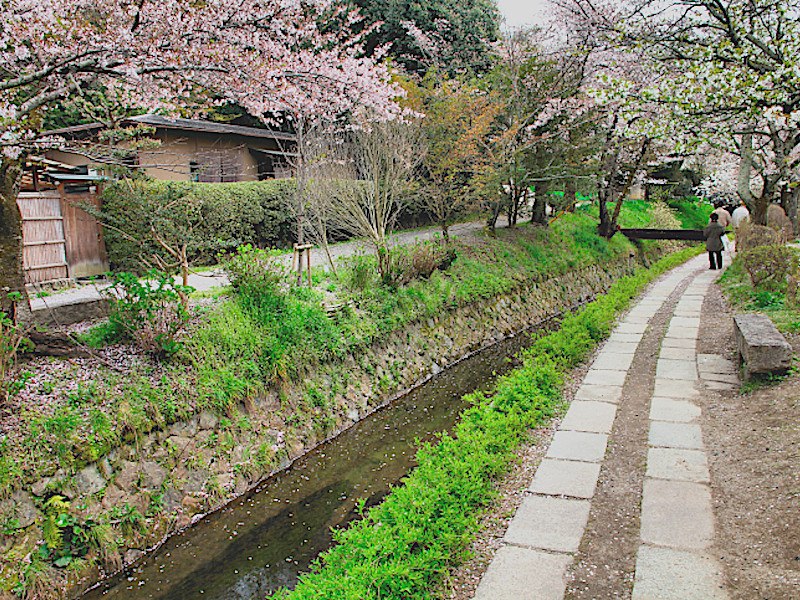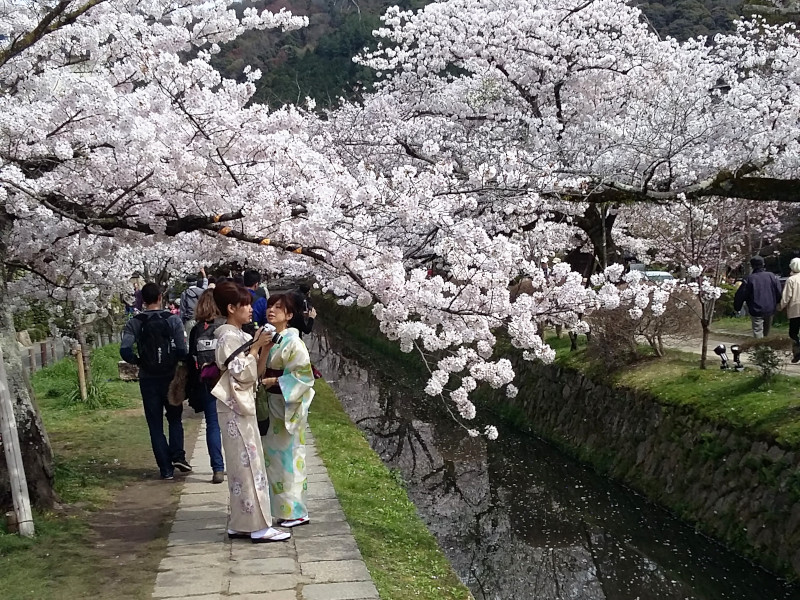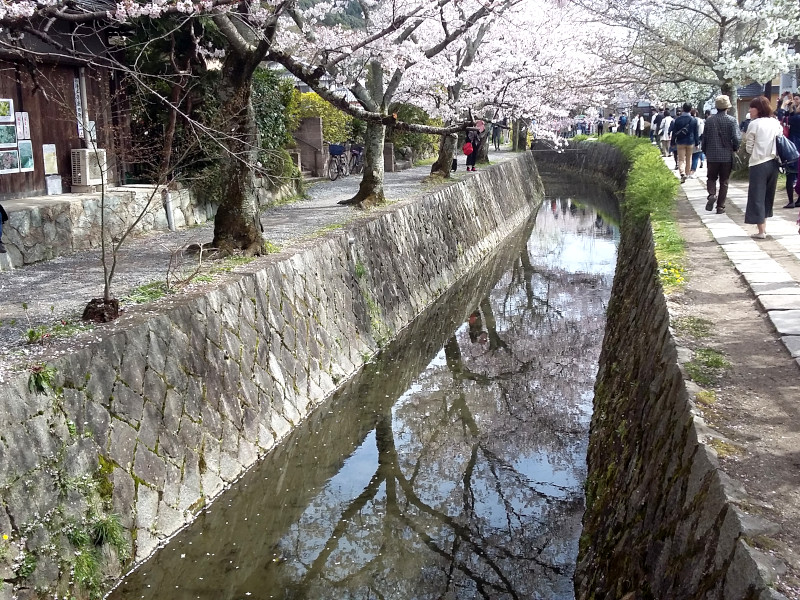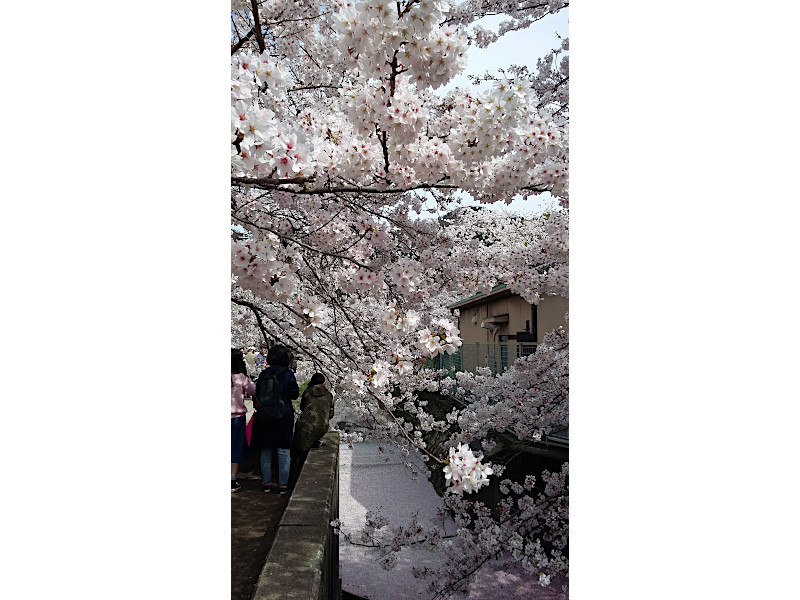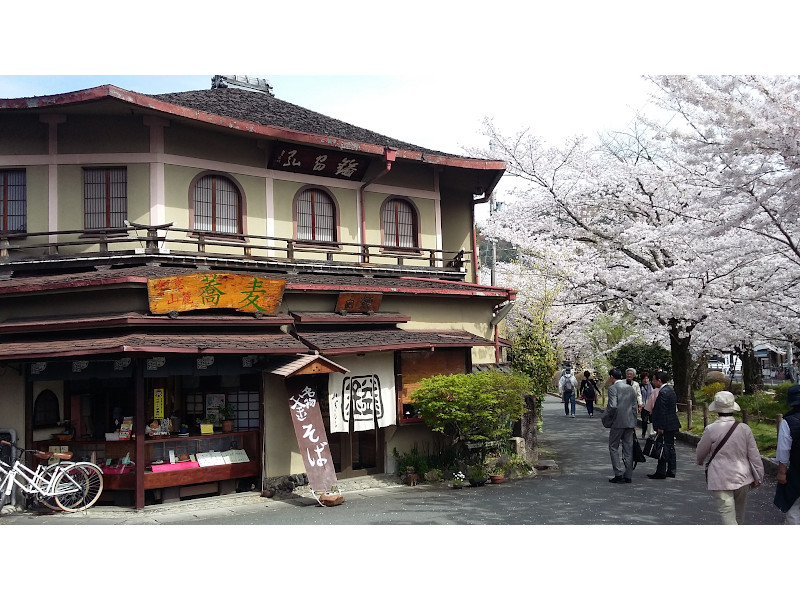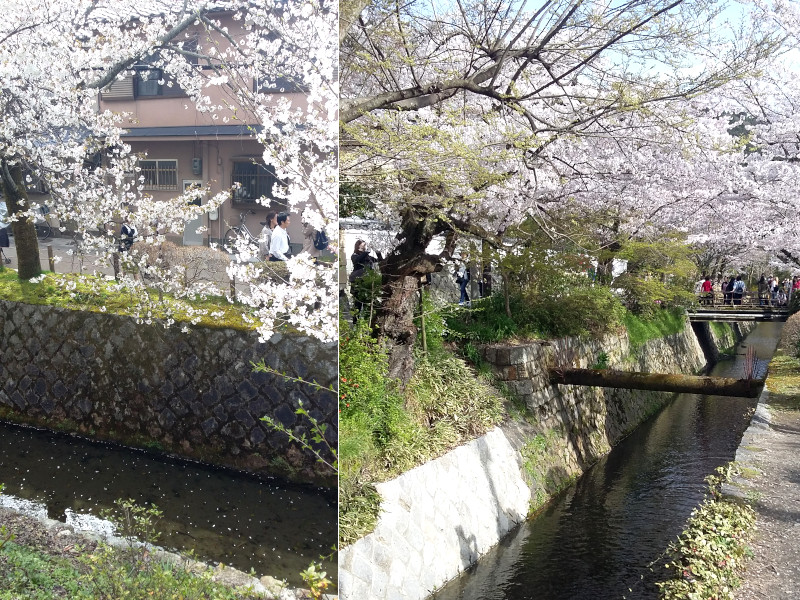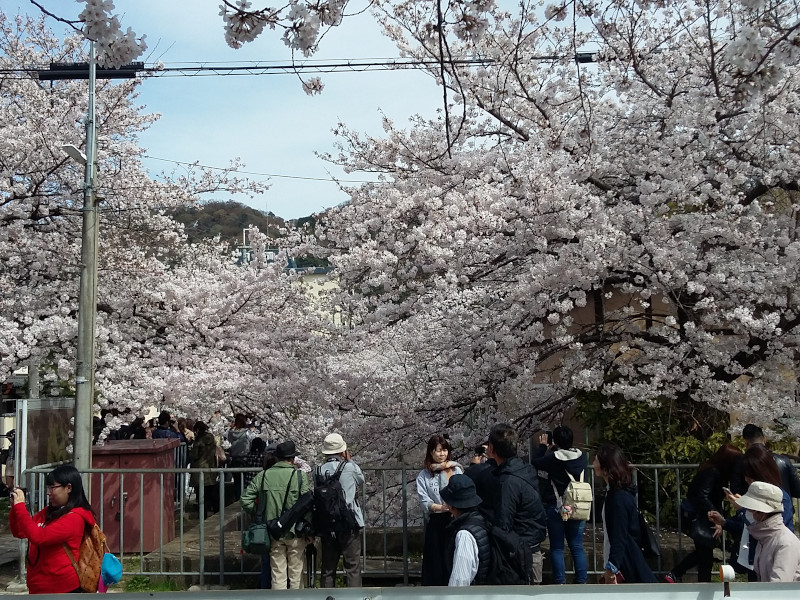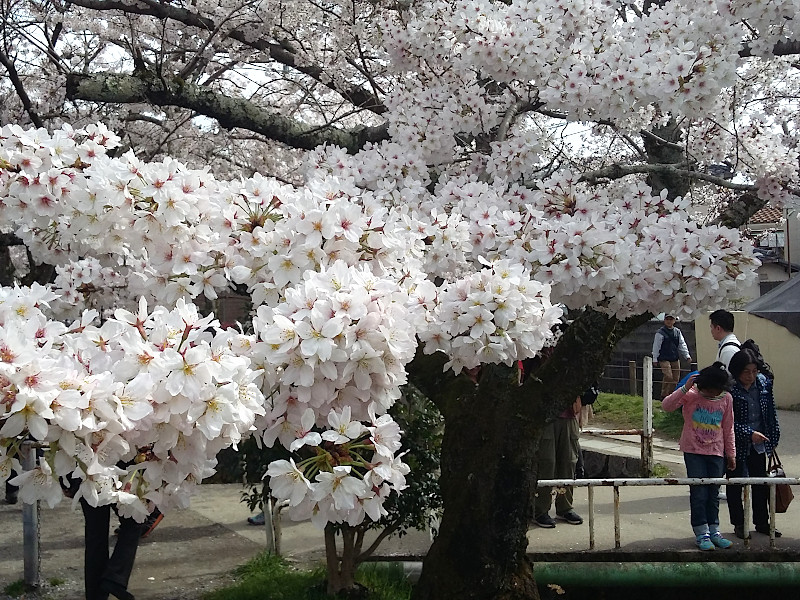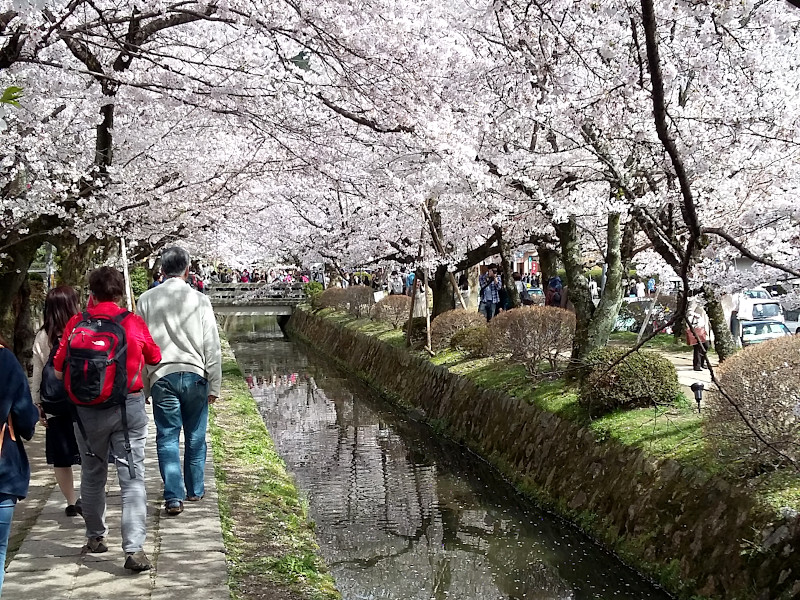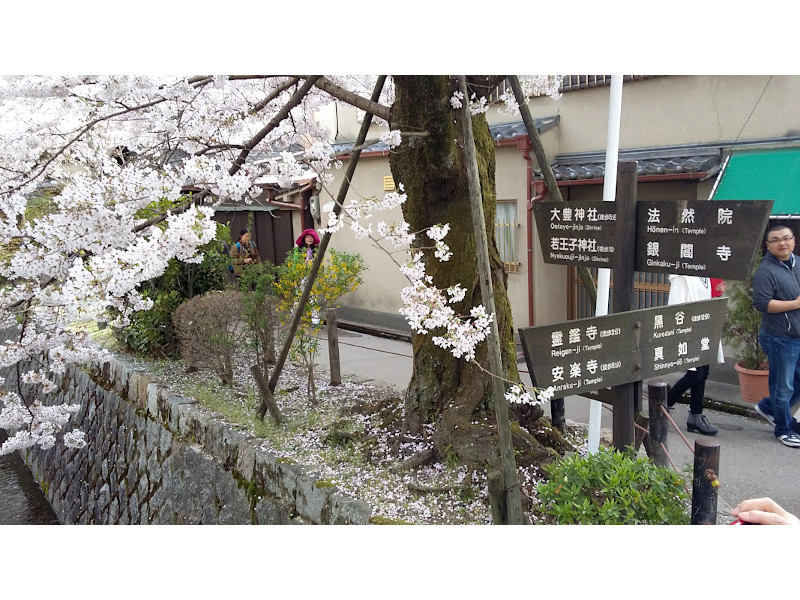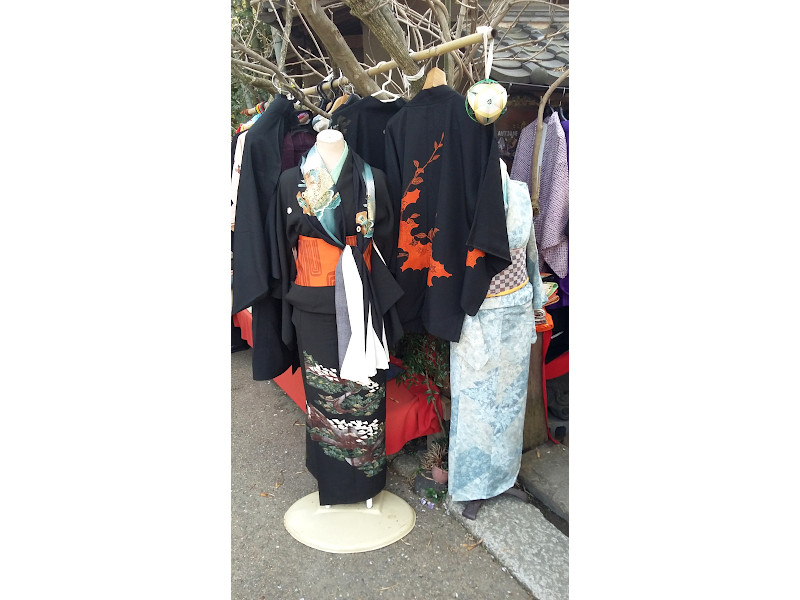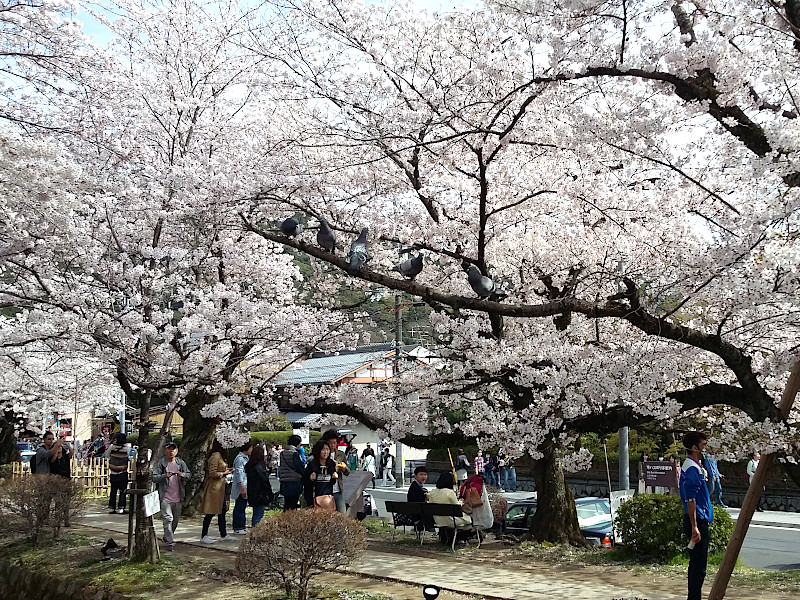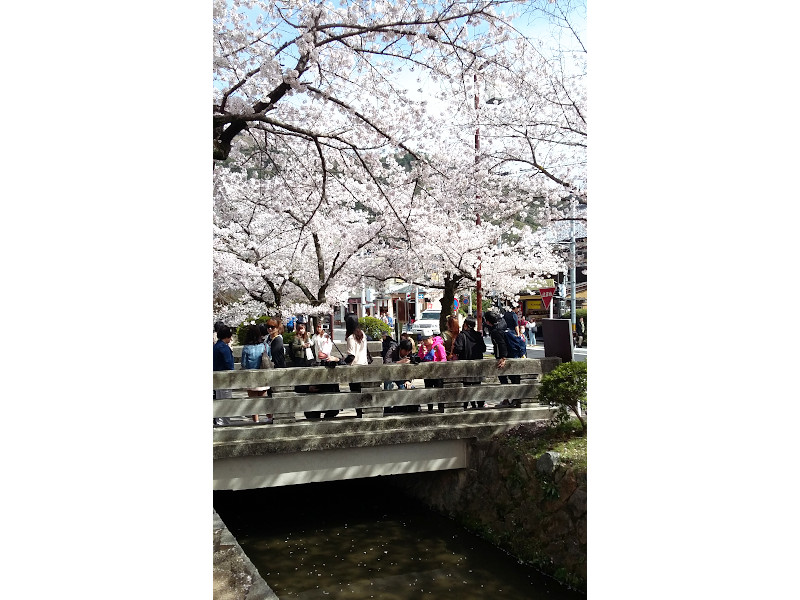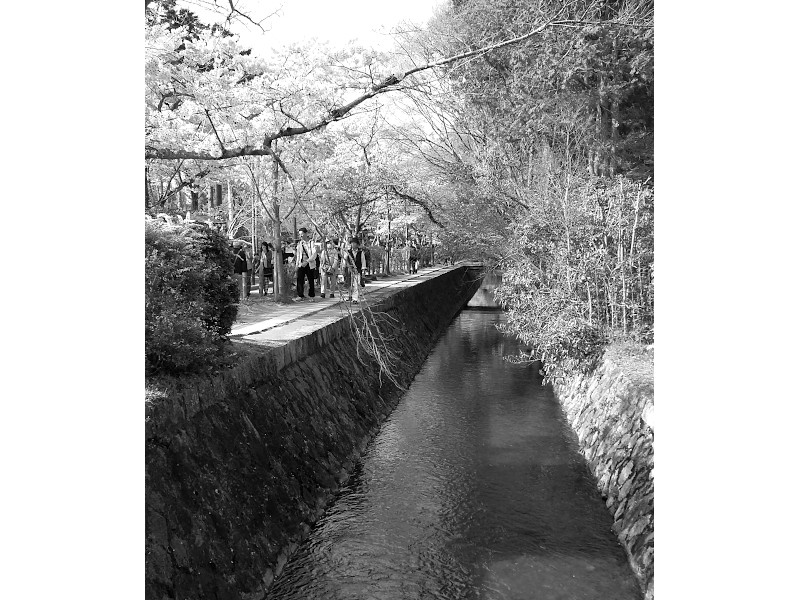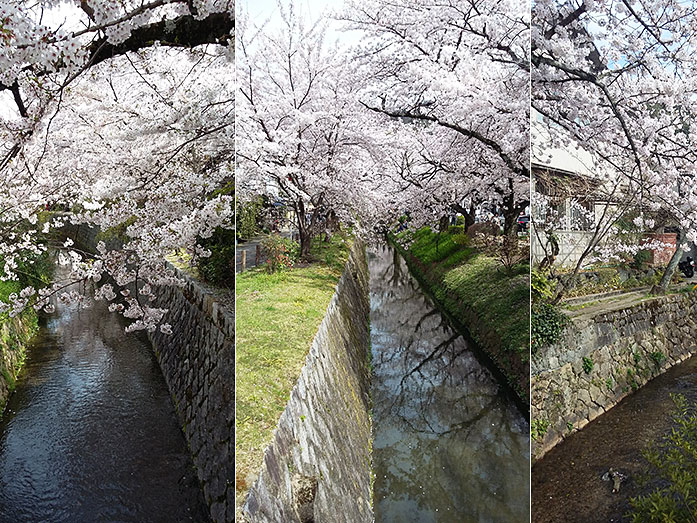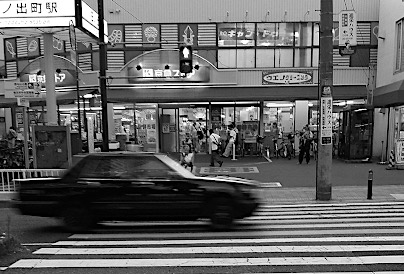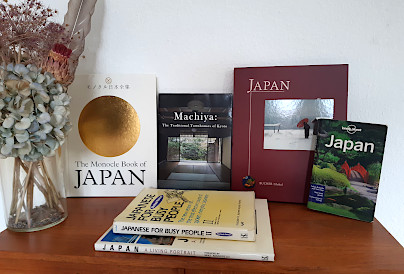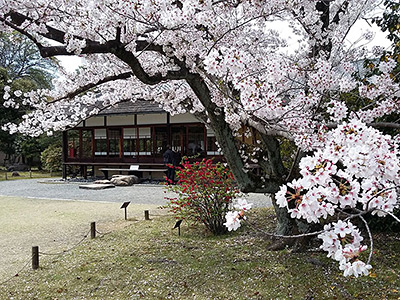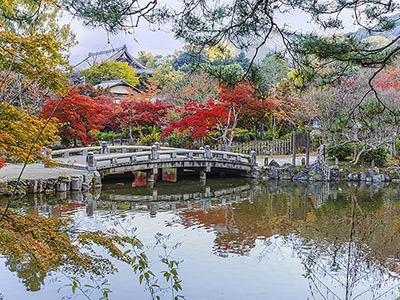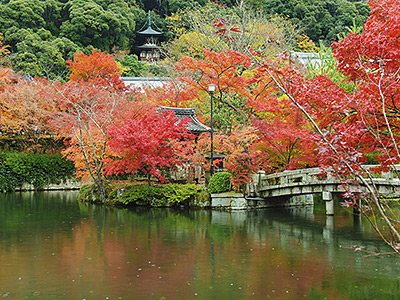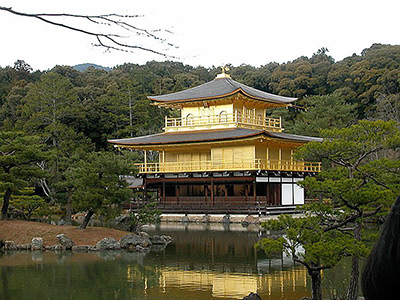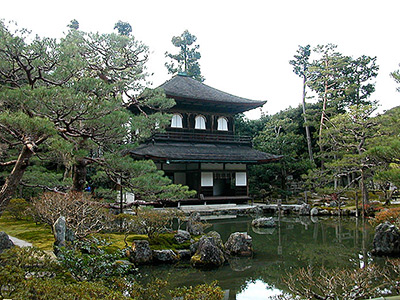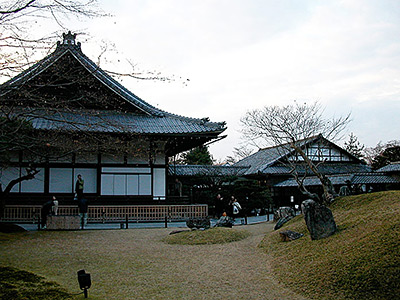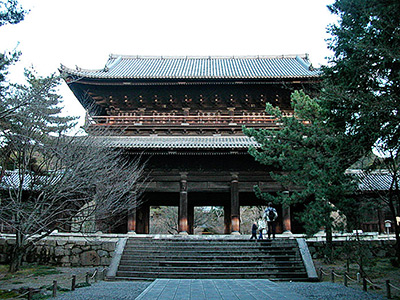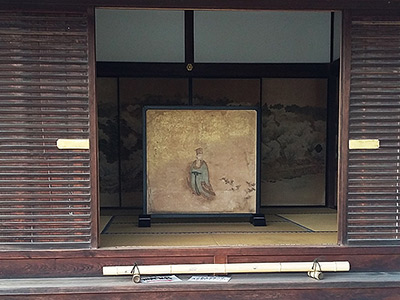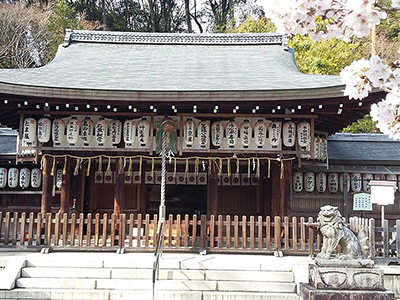Philosopher's Path in Kyoto
This post can contain affiliate links, which means that we may receive a small commission if you make a purchase using these links.
Facts & Figures
The Philosopher's Path (Tetsugaku-no-michi) is an approx. 2km long pedestrian stone path within the Higashiyama district in Kyoto alongside a branch of the Lake Biwa Canal. The water of this canal was used to power Japan’s first hydroelectric power plant. The best time for a visit is in spring (late March/early April) during the cherry blossom season (sakura). The cherry trees along the path are very popular with tourists and locals.
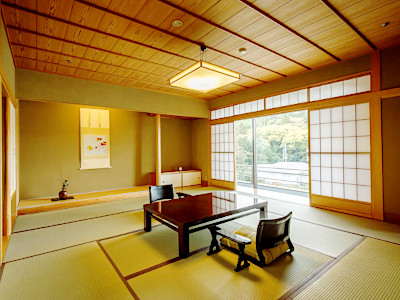 Explore Ryokans in Kyoto >
Explore Ryokans in Kyoto >
Ryokans are the perfect way to discover old Japanese culture and traditions.
Be aware that it can get really crowded because everyone would love to take a picture of the frail pink sakura petals. The Philosopher's Path is one of the best Sakura spots in Kyoto. Start this 45 to 60min walk in a nice historical atmosphere at the Ginkaku-ji Temple, a UNESCO World Heritage Site, and enjoy the beautiful scenery with little stone bridges, willow trees, colorful carp (koi), cute shops, cafes, and restaurants. You will pass by the Eikan-do Zenrin-ji Temple, Anraku-ji Temple, Honen-in Temple, Reikan-ji Temple, Otoyo Shrine, Kumano Nyakuoji-jinja, and the path ends near Nanzen-ji Temple. Another highlight is a visit during fall when the beautiful maple foliage of the surrounding mountains creates a unique atmosphere. My special tip: Enjoy a Rickshaw ride (strong men pulling the carts) along parts of the Philosopher’s Path. It will cost you around 50 Euro for a 30 min trip.
My tips for local activities
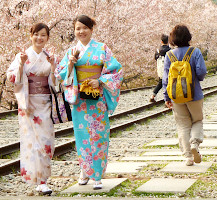
How about exploring the best parts of my favourite city Kyoto with a local guide? The personalized tour by our partner GetYourGuide can take between 2 - 8 hours. For more details check out this page >
History
The Philosopher's Path got its name from Nishida Kitaro (1870 - 1945), a Kyoto University professor and one of the most famous philosophers in Japan. He used to walk here with his friend Hajime Kawakami (1879 - 1946), a Professor of Economy, along the canal for his daily meditation. The construction of the path at the foot of the Higashiyama Mountain Range was completed and opened to the public in 1890. In 1912 the Philosopher's Path was extended further south. Thanks to the great support of the local people the passage was completed as a walking trail in 1968 between the Jodoji Bridge till the end at Nyakuoji Bridge. Since that time the residents and the Kyoto City Water Supply and the Sewage Bureau have worked on the maintenance of the path. In 1986 the Philosopher's Path was selected for the 100 Best Japanese Roads list. Watch out for Kitaro’s poetry inscribed on large stones beside the trail.
Location

The path starts near the Ginkaku-ji Temple in Kyoto.
The Philosopher's Path starts near the Ginkaku-ji Temple (Silver Pavilion) in Kyoto in the northern part of the Higashiyama district.
Address: Start at Ginkaku-ji - 2 Ginakuji-cho, Sakyo-ku, Kyoto 606-8402 Japan
How to get to Philosopher's Path?
- 35min from Kyoto Station to Ginkaku-ji Temple by bus 5, 17 and 100
Sightseeing spots
along the Philosopher's Path:
Ginkaku-ji Temple - Ginkaku-ji Temple also known as "Temple of the Silver Pavilion" is one of the most famous Zen temples in Kyoto. It was built in 1460 as the retirement villa for shogun and art lover Ashikaga Yoshimasa (1436 - 1490). It is a UNESCO World Heritage Site since 1994. Read more >
Eikan-do Zenrin-ji Temple - The large Buddhist temple complex Eikan-do, also called Zenrin-ji, is the headquarters of the Jodo-shu (Pure Land) Seizan Zenrin-ji sect. In 853 a priest with the name Shinsho (pupil of the famous Kobo Daishi) bought this property and in 863, after the approval of Emperor Seiwa (850 - 881), the construction of the Zenrin-ji started. Read more >
Honen-in - The small Zen Buddhist temple was constructed in 1681 by Nincho, the 38th head priest of Chion-in temple. Read more >
Reikan-ji Temple - Retired Emperor Go-Mizunoo (1596 - 1680) established this temple in 1654 and gave it the name Enjosan Reikan-ji. It is a nunnery and part of the Nanzen-ji School of the Rinzai Zen sect. Read more >
Otoyo Shrine - This shrine was built during the Heian period in 887. It is a unique shrine that is guarded by two Komanezumi mice instead of a pair of Komainu dogs.
Kumano Nyakuoji-jinja - The Shinto shrine Kumano Nyakuoji-jinja marks the end point of the famous Philosopher's Path in Kyoto. It was founded by retired Emperor Go-Shirakawa (1127 – 1192) in 1160. The shrine belongs to the group of three Kumano shrines in the city. Read more >
Nanzen-ji Temple - The temple formerly known as Zenrinji, is a large Zen Buddhist temple complex in Kyoto. The famous and huge two-story Sanmon Gate forms the main entrance of Nanzenji. It has a height of 22m and is part of the top three gates in the city. Nanzenji started as a retirement villa for Emperor Kameyama (1249 – 1305). Read more >
Kitaro Nishida's memorial - It is a stone with the following message engraved - You are you, and I am I, and I will live as I believe.
Festival & Events (dates can change without notice)
April
Cherry Blossom (Hanami) (beginning of April)
Take your time to walk along hundreds of cherry trees.
May
Aoi Matsuri (15th)
The highlight of this festival is a large parade from the Imperial Palace through the Shimogamo Shrine and ends at the Kamigamo Shrine (Kamigamo-jinja). More than 500 people wearing aristocratic costumes from the Heian Period (794 - 1185). The Aoi Matsuri belongs with the Gion Matsuri and Jidai Matsuri to the three most famous festivals in Kyoto.
Arashiyama Mifune Matsuri (third Sunday of May)
The first part is held at the Kuramazaki Shrine. Later a procession leads to the Oi River, where more ceremonies and traditional dances (Funa Asobi) are held. The Arashiyama Mifune Matsuri started in 1914.
July
Gion Matsuri (whole month)
The month July is full of different events like the Yoiyama - Kyoto's Magical Night (locals in kimonos look at the giant Gion floats the day before the parade) or the famous Yamaboko Junko (float procession on the 17th of July).
October
Jidai Matsuri ("Festival of Ages") (22nd)
People celebrate with a large parade between Imperial Palace to Heian Shrine the anniversary of the foundation of Kyoto. App. 2000 participants wearing historical costumes from different time periods. Enjoy this great festival which lasts around 2 hours.
Where to stay in Kyoto?
Day trips from Kyoto:
My 100 Best Moments in Japan
I have visited Japan nearly every year since 2004. This is my collection of the 100 best moments in my favorite country. Enjoy the pictures and I hope you will start your own journey soon.
Find out more >
Books about Japan
Reading books is a great source of inspiration for me. Check out my recommended list of books about the fascinating country Japan.
My Book recommendations >

